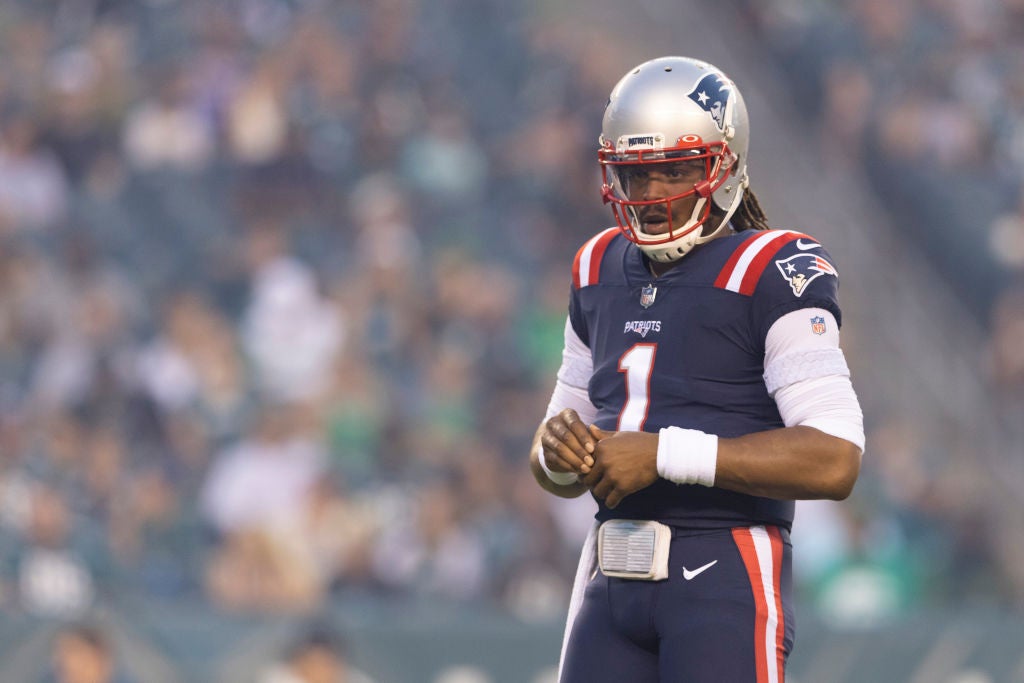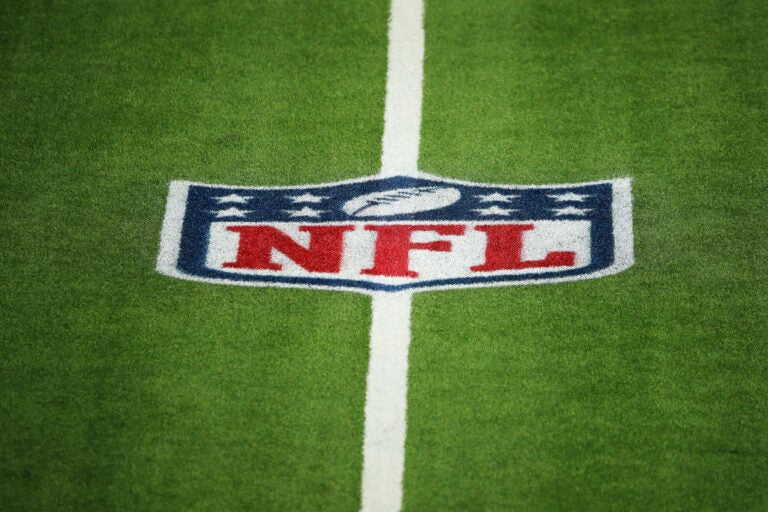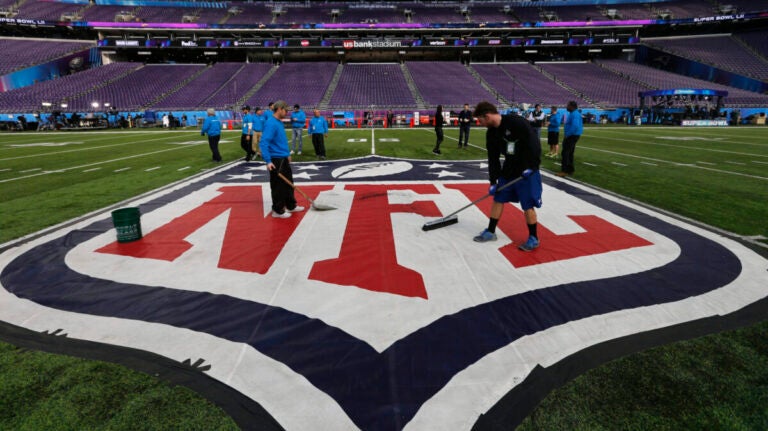Running in Place: How the NFL Continues to Devalue Black Quarterbacks
Why this matters
While diversity and equity studies in sports often focus on positions of off-field leadership and power, the treatment and compensation of athletes also require examination. Updated research on the National Football League suggests that Black quarterbacks are underpaid and underserved relative to their White counterparts.
Besides being White, what do National Football League quarterbacks Carson Wentz, Andy Dalton, and Ryan Fitzpatrick have in common?
Well, none were the first pick in the NFL’s annual draft. None have started in a Super Bowl. And none have ever been chosen the league’s Most Valuable Player.
In other words, none have a professional resume comparable to that of Cam Newton.
When the current NFL season began, however, Wentz, Dalton, and Fitzpatrick were all starting under center even though they had failed elsewhere. Fitzpatrick, for example, was starting for his ninth team, an all-time league record. Meanwhile, Newton, a former MVP who is Black, wasn’t even signed to a roster.
Though it’s impossible to say with certainty that race played a role in the statuses of those four quarterbacks, it’s hardly unreasonable to wonder. For most of the NFL’s history, Black quarterbacks have been evaluated differently than their White counterparts, simultaneously undervalued and held to a higher standard. And statistical analysis suggests that this is still the case.
Start with the idea of the “dual-threat” quarterback – players, as writer Michael Lee of The Washington Post puts it, whose “legs can do damage right along with a powerful throwing arm.” Lee argues that such players are “dynamos” and that their ability to gain yards both on the ground and through the air makes them especially valuable.
On the field of play, that’s undoubtedly true: Advancing the ball is a good thing, no matter how you do it. But off-field compensation is another matter. More than a decade ago, Rob Simmons and I analyzed NFL quarterback salaries from 1995 to 2006 to determine which independent variables – ranging from draft position to on-field performance – best explain why some signal-callers are paid more than others.
In doing so, we found that rushing yards had no impact on pay. Zilch. Recently, we looked at data from 2006 to 2020 to see if anything has changed. It hasn’t. NFL quarterbacks receive pay premiums for many things, including career experience (about $220,000 per year) and passing performance (roughly $500,000 per 1,000 yards). But running prowess isn’t one of those things.
Why does this matter for Black quarterbacks? Simple: They tend to run more often than White ones. In the 2020 season, for example, the average White quarterback who logged at least 100 plays ran 7 percent of the time. By contrast, each of the 11 Black quarterbacks who logged at least 100 plays exceeded that average.
Similarly, six of the eight quarterbacks who ran at least 10 percent of the time were Black, whereas all 12 of the quarterbacks who ran less than 5 percent of the time were White.
Related: College Sports Amateurism Costs Black Athletes Billions
This isn’t new. In our previous study, we found that White quarterbacks, on average, ran with the ball only 6.7 percent of the time, gaining 7.3 yards per game. Meanwhile, Black quarterbacks, on average, ran 11.3 percent of the time, gaining 19.4 yards per game.
NFL teams, as Lee argues, may want dual-threat quarterbacks – but they don’t want to pay extra for them. And this impacts Black quarterbacks more than White ones. When former NFL quarterback Steve McNair, who is Black, rushed for 3,590 yards over the course of his 13-season career – 2,904 yards more than the NFL career rushing total of fellow 1995 draftee Kerry Collins, who is White – he essentially did it for free.
Perhaps this isn’t surprising. The NFL’s passer rating system, developed in the early 1970s and still predominant in game broadcasts and player evaluation discussions today, considers only what a quarterback does with his arm – thereby ignoring the very factor that makes dual-threat quarterbacks such a threat.
According to the NFL’s system, Dalton was better than Newton last season. But a more comprehensive measure of quarterback performance would produce different – and arguably, less biased – results. In a pair of books I co-authored with other economists, we use a formula called Wins Produced, which considers passing yards, rushing yards, sacks, interceptions, and fumbles. By this measure, Newton outperformed Dalton in 2020.
Of course, disregarding how running contributes to offensive production isn’t the only way that NFL decision-makers, most of whom are White, seem to devalue Black quarterbacks. In our studies, Simmons and I found that while White signal-callers who are chosen for the Pro Bowl enjoy higher pay in the future, their Black counterparts do not.
Similarly, all quarterbacks – Black and White – enjoy an initial pay boost from being a high draft pick. For White quarterbacks, that effect lasts more than a decade; for Black quarterbacks, it fades after seven years. When NFL teams are determining pay, the question for White quarterbacks seems to be what have you done? But for Black quarterbacks, it seems to be what have you done lately?
We are not the only researchers to find evidence that Black and White quarterbacks are evaluated differently. In 2017, economics professor Brian Volz examined NFL data from 2001 to 2009. Controlling for factors including injury, age, experience, performance, team investment, and the quality of a team’s backup, he found that Black quarterbacks were twice as likely as White ones to be benched.
In addition, Volz found that teams that benched White quarterbacks were more likely to improve relative to teams that benched Black quarterbacks – suggesting that this sort of discrimination occurs despite having a negative impact on success.
Researchers studying race and employment outside of football have observed similar disparities in how Black and White workers are evaluated. One 2015 study found that Black workers tend to face more scrutiny than White workers, which increases their relative probability of being fired and decreases their chances of having a long career with one company. Discussing this research in The Atlantic, Gillian White observed that:
“For decades, black parents have told their children that in order to succeed despite racial discrimination, they need to be ‘twice as good’: twice as smart, twice as dependable, twice as talented.”
As fans, we like to tell ourselves that sports in general – and the NFL in particular – re meritocracies. That the bad, old days of overt racial discrimination against Black athletes are over and that talented Black quarterbacks like Marlin Briscoe are no longer forced to play other positions. We celebrate the success of today’s star Black quarterbacks, like former league MVPs Patrick Mahomes and Lamar Jackson, and we hold up their accomplishments as proof that time and progress march forward.
The NFL certainly is a more welcoming place for Black quarterbacks than it was decades ago. But just how much more? At the start of the 1991 NFL season, fewer than 10 Black quarterbacks ever had participated in 100 or more plays in a single season, a dismally low number. During the 1999 season, however, 10 Black quarterbacks reached that milestone – a sure sign of improvement.
The next season, 11 Black quarterbacks participated in at least 100 plays. The same thing happened in 2003, 2006, 2013, 2019, and 2020. But that total has yet to be surpassed. Progress, it seems, has stalled. Two decades into the 21st century, 11 Black quarterbacks playing a significant amount of time somehow remains the NFL’s high-water mark, even though there are 32 teams and the league’s player population is majority Black.
Related: 'Sport Matters': Why the NFL's Racial Power Dynamics Persist
In fairness to NFL decision-makers, worker evaluation in many jobs is quite difficult – nd this definitely holds true for quarterbacks. Performance depends not only on individual talent but also on teammates, coaching, and the quality of opposing defenses. It’s not surprising that teams make mistakes.
Still, it’s disappointing that the NFL’s evaluation process appears to be biased against Black quarterbacks. And maybe the surest sign of that bias is this: yes, dominant Black signal-callers are given opportunities and paid handsomely for their work. In the past year alone, Mahomes and Dallas Cowboys quarterback Dak Prescott signed new contracts worth more than $550 million combined. And former No. 1 overall pick Kyler Murray, who has led the Arizona Cardinals to an undefeated start, could be setting himself up for a large raise. But what about the Black quarterbacks who aren’t amazing – or those, like Newton, who aren’t as good as they used to be?
True workplace equality isn’t achieved only when outstanding Black employees enjoy the same opportunities and rewards as their outstanding White counterparts. It happens when average and mediocre Black workers also are treated the same as their White peers. Black quarterbacks shouldn’t have to be “twice as good” in order to work in the NFL. They shouldn’t be evaluated differently or held to higher standards. Until that changes, the league cannot be considered a full meritocracy. Not while Black quarterbacks continue to be devalued.





